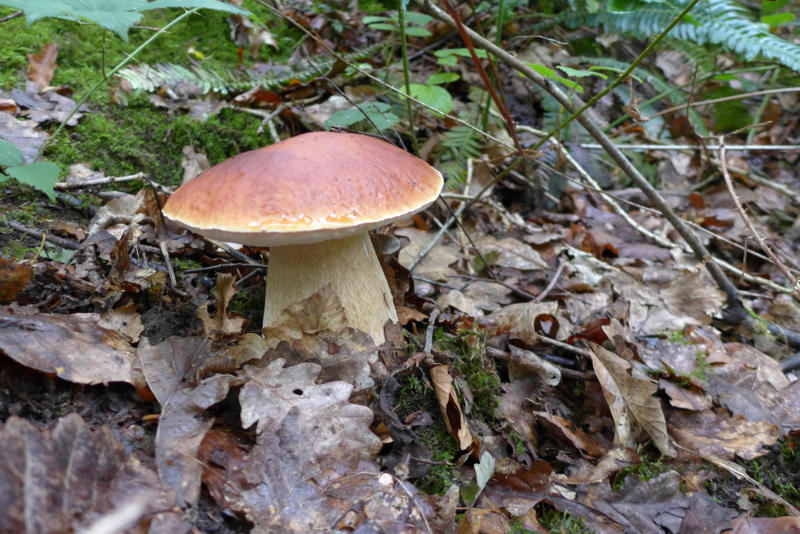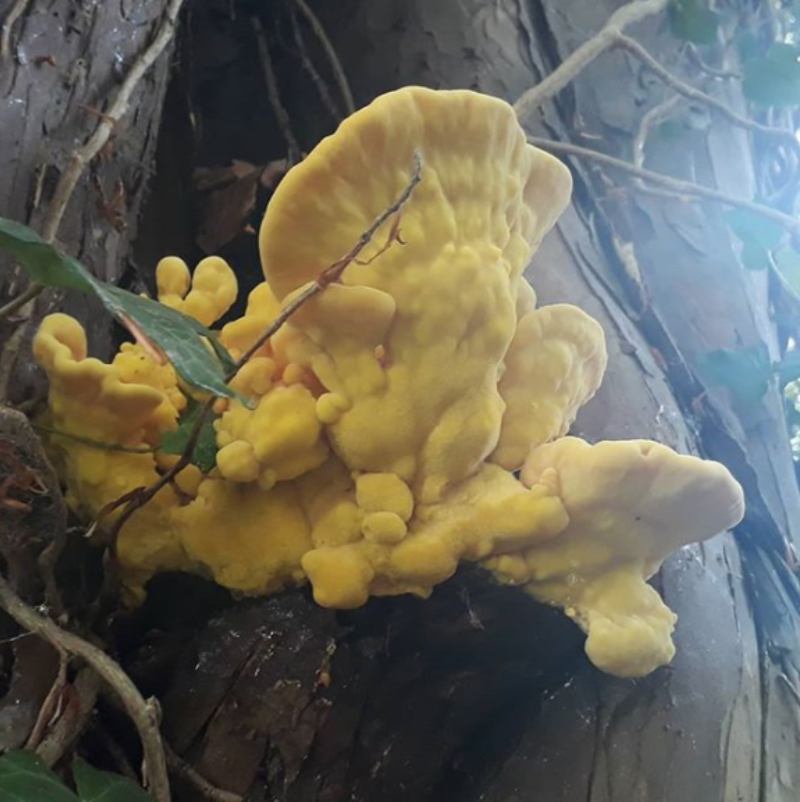Haarlem Periodical
Feral Practice
Mycorrhizal Meditation

Feral Practice’s soundwork for Haarlem Periodical is a guided meditation choreographing a connective journey down through the human body and into a dynamic, semiotic underworld of living soil and mycorrhizal mycelium.
Feral Practice works with human and non-human beings to create projects and inter-disciplinary events that develop ethical and imaginative connections across species boundaries. Their research draws on artistic, scientific and subjective knowledge practices to explore diverse aesthetics and create suggestive spaces of not knowing nature.


Homo Mycelium
Hyperconnection.
The internet. You are tuned into, tied into, addicted to information networks. You come alive - on waking - to the others, as thousands of your neuroreceptors snap and tingle, brimming with newsfood, and the like/s.
All life is semiotic [1].
Have we just been kidding ourselves we’re individual, self-determining? Perhaps (like the forest) we’re destined- designed to be continually, reciprocally enmeshed.
Plants respond - to sun, night length, temperature, sound, wind, physical pressure, electric and chemical signals. Communication via ambient sensing is outclassed and outpaced by vast, sentient, underground networks stretching over acres of forest – a multispecies mesh made of plant roots, rootlets and their interface with the gossamer-fine filaments of mycorrhizal fungi. A cubic inch of topsoil contains eight miles of single-cell-thick fungal hyphae. With each step we walk upon “vast, sentient, cellular membranes.” [2]
Reciprocity
The information you receive becomes indistinguishable from your sustenance. Subtleties of gift and receipt are complex. You offer your attention - hopefully, hungrily, waiting… You get sips of craved-for minerals, your sweetness leeches out in return. It’s not involuntary… you could stop… but if you did… would you still… exist?
The wood-wide-web, too, is built on give and take. Mycelial hyphae, slimmer than any root, access mini-moleculed minerals like phosphorous and nitrogen efficiently. These they share with trees, who repay them in photosynthesized sugars. Ordinarily this barter system balances, but there are notable instances of altruism. Trees often feed youngsters shaded by their branches. More evocatively, they occasionally feed a neighbour tree’s root-stump for decades or centuries after the tree itself has rotted away. Could an ancient root-stump be a vital community knowledge hub, a beloved ancestor?[3]


Communicate.
Plant scientists distinguish four levels of communication: Sensing: a plant notices a stimulus that may be something inorganic, like day length. Eavesdropping: a plant catches a whiff of chemical signal from a neighbour: Caterpillars! Communication: a signal is sent by one individual to another, but the sender and receiver might have different intentions. True communication: the signal sent and received benefits both parties, and is fully intentional (challenging for us all).[4]
In 1997 Suzanne Simard published extracts of her PhD thesis in the journal Nature, revealing how trees talk to each other. She used terms like ‘mother trees’ and ‘forest wisdom’ which frightened the scientific horses, but pioneered an overdue rethink about the liveliness of plants. To Simard, using the language of communication and connectivity was correct, because it described what she was witnessing - the kind of cooperative defence and kin recognition we expect from social animals, but operating across diverse species boundaries. Her anthropomorphic language was a political choice, pressing humans to relate more fully to these green beings we barely notice, to heal from the monotheistic, anthropocentric disorder that botanist-educators James Wandersee and Elizabeth Schussler named as “plant blindness.”[5] They suggest the sickness has at least some of its origins in our inability to see plant movement because we move too fast, and our inability to distinguish plants until they are doing something colourful like fruiting or flowering. Humans can notice plants, or our ancestors would not have known what to eat. We are just out of practice because we forage at the supermarket.
Robin Wall Kimmerer teaches her students how to see green plants by countering the traditional aeroplane-like activity of walking at speed through woods full of detail, and practicing sustained, sensitive exploration of a single mossy rock; a quality of attention that unfolds a new, miniature, sensuous universe of architectures, textures, and Latin binomials.[6] The status of personhood that is afforded to all beings in her Potawatomi Nation heritage plays at least as important a role in her teachings as her botanical training does.
Deep in the Soil the Mushrooms are Singing.
Field-recording musicians use tiny contact microphones to eavesdrop on the song of the mushrooms - their growth, spore release, snippets of what they’re thinking. In the radio broadcast Mycelium Antye Greie-Ripatti sonifies the vital functions of fungi and counterpoints them with voices of activists from all over the world to suggest a quiet but revolutionary utopia[7].
In the Mycorrhizal Meditation shared here, contact microphones recorded the rhythmic popping of sap rising through the phloem of trees in spring, and I used an instrument that captured the electromagnetic variations from the surface of plant leaves to the root system. One sensor was attached to a leaf or fungal edge (of an alder tree, an oak sapling, and a field mushroom), and the second to its root or mycelium, creating an electrical circuit. The machine detected the subtle changes in the electrical resistance within that circuit and converted them into sound, into tonal change. This produced a unique ‘song’ direct from these specific beings, with tonal variations affected by moment-to-moment shifts in sunlight and moisture levels.
Some people do not need digital intervention to hear fungi. It was 1980 when Václav Hálek heard his first mushroom sing, and he has since translated their singing into classical scores for piano, violin and viola. His Symphonie des Champignons is available on Youtube[8] below, and is lovely, but doesn’t sound nearly so mushroomy to me as John Cage’s compositions, which were never officially attributed to his fungal friends.[9] Hálek could distinguish the vocal traits of each different species of mushroom, and devoted the remainder of his life to creating thousands of individual mushroom tunes. The Field Blewit (Lepista saeva) has the most variations, due to its long season [10].

Jesus was a Mushroom.
Some say our consciousness, our sapiens, is allied with fungi because we evolved through the (accidental then intentional) ingestion of Psilocybin mushrooms, idly nibbled by early humans as we trailed herds of ungulates away from the African forests and out into the grasslands. Synaesthetic connections erupted like flushes of button mushrooms, conjuring vibrant pictures in entropic minds as the first words were spoken. The psychedelic origin of religion (shamanic practice, sacred visions) is uncontroversial, but devout Christians complain that the outlying theory which posits Jesus as ‘code’ for the use of Amanita muscaria (Fly agaric) goes too far. Its place as the ‘tree of knowledge’ that Adam and Eve ate from sounds more feasible.
There are striking connections between the red and white outfit of Santa Claus, his flying reindeer, and Amanita’s white-spotted bright red cap. A common vision under the influence of Fly Agaric is of flying, and it also induces massive distortions of time and space. The Saami of Lapland and Evenki of Siberia are reindeer herders and northern shamanic cultures. They use Amanita for ceremonial and spiritual purposes. Wary of the mushrooms toxicity, they sometimes employ toxin-filtration via reindeer-kidney. Reindeer enjoy Amanita and get high, shamans drink reindeer piss and get high safely. Another way to reduce the toxicity is to dry the mushrooms. When out collecting, the shaman lays his mushrooms out along branches to dry, producing the effect of fir trees decorated with bright red baubles. When picking is finished, the harvester collects the mushrooms into a large sack and distributes them to the homes of their people, who continue the drying process by hanging them in a sock near the fire.


Connect like the Forest.
What might we bring from the deep connective under-and-over-world of forest into recreating human social connection? Here, in the feeling darkness, and in togetherness, there is power. Here, each species has a role, and a niche. Some species of fungi have exclusive relationships with particular trees. Other mycorrhizae mingle with all comers in the multispecies party of the woodland soil. In the forest, the so-called ‘tragedy of the commons’ is exposed for the fallacy it always was. Connected systems self-regulate. Community systems of give and take are stretchy, but strict.
Generosity is based on kinship, reciprocity, and need. Fungi might help us to expand, or fine tune, our awareness of one another, to look out… for what ‘exceeds the frame’[11] of our own experience.
Differences are not tolerated in the forest, they are vital. As biodiversity enriches, the community becomes ever more resonant and resilient, till it ‘shimmers’[12] with health.
Superorganism.
Rest your forehead on a tree and your quantum-thinking sapiens strangeness might just intermingle with the etheric patterns of pops and whirrs as sap powers up and down the phloem. I find this humbling. Look up. Your forehead is tickling the tree’s ankles. So now, get inside your body, feel the weight of each part of you as you stand by that same tree. Grunt. Wobble. Shake your limbs. Close your eyes. Send your attention down into your boots. Feel your soles begin to melt away. Caress the soft, dark soil between your toes. Push your feet deeper under, till you’re tapping into and drawing on that warm, irrational body of seething knowing-unknowing that is the wild and vibrant earth.
This essay Homo Mycelium by Feral Practice was extended and updated for Haarlem Periodical from an earlier text published in Are We All Addicts Now? a book made in collaboration with artist Katriona Beales, edited by Vanessa Bartlett and Henrietta Bowden Jones, designed by Stefan Schåfer and published by Liverpool University Press.

